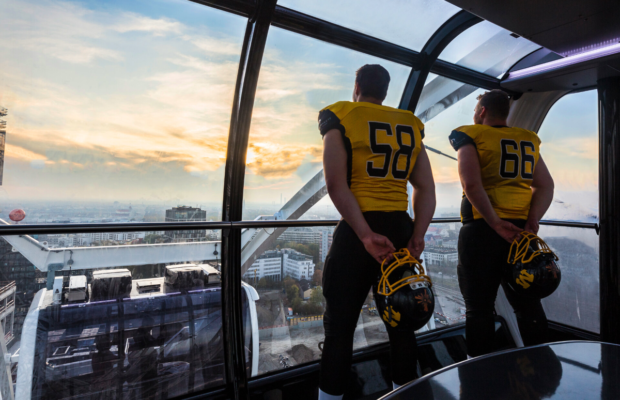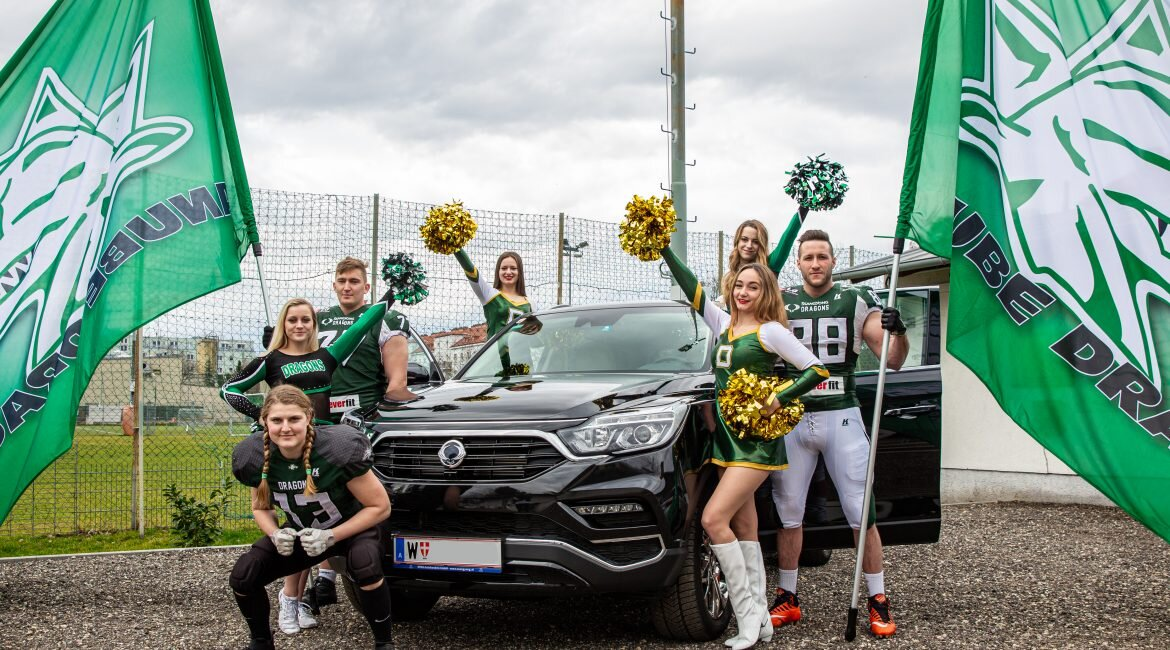How to Structure Your Sponsorship Pitch

To say that American football is one of the fastest growing sports in the world is a gross understatement. There are hundreds of thousands of American football teams around the globe and over a million American football players on six different continents (we’re still holding out hope on Antarctica). Even if you zoom in on Europe alone, the numbers are quite impressive. Of the 50 European countries, 41 have American football teams; over 1,600 teams are sprawled across the continent and the number continues to increase with each passing year.
With the rapid development of the sport across the world, there is an increasing interest in sponsorship at the grassroots, local level and at the mid-market, commercial level. Appealing to local companies and commercial businesses has never more important to American football clubs and it’s critical to know how to approach these potential sponsors with the right pitch. Detailed below are some key points to remember when pitching a potential sponsor.
A clean website goes a long way
The first thing companies will do when approached about a sponsorship opportunity is to search your team online and visit your website. So you better have a website. “But our team has a Facebook page and an Instagram account.” That’s great, but it’s not enough. A company probably won’t consider sponsoring you if you don’t have a website. Wix, Squarespace and WordPress all offer inexpensive plans to get you started.
It doesn’t need to be overly expansive or elaborate, but a clear idea of what your team is all about is strongly advised. A good example of a simple and informative website is the Limhamn Griffins in Sweden.
Professionalism and organizational structure are imperative
Once you have a website, it’s important to clarify the defined roles and contact information of the appropriate people within your club. For example, if you have someone responsible for marketing, make sure they are listed on your website with an email address. Someone responsible for finances? Make sure they are listed on your website with an email address. Having different roles and responsibilities for people within your club is vital enough, but exemplifying it on your website will add a layer of professionalism and organizational structure and enhance your club’s public perception.
The Calanda Broncos have a page devoted specifically to their board members which details the roles and contact information of each person. It’s helpful for a potential sponsor to see that you have multiple people with varying responsibilities in your organization.
Provide value before asking for money
Uras Aslan, a longtime board member of the SsangYong Danube Dragons, discusses how they got their title sponsor:
“When we had our first meeting with SsangYong, we showed up to the meeting with photos, statistics, our following/engagement on social media, a Super Bowl party invitation, and more. We did a lot of homework beforehand and showed up ready. We wanted to provide as much value up front before we even discussed money.”
When I asked Uras why providing value was so important for the long-haul, he elaborated:
“Even if a team gets ‘lucky’ and lands a sponsor, after a year the sponsor will back out if the team isn’t providing much value to the team. It’s important to do your research and understand what you are actually able to deliver, and try to match those values with your prospective sponsor.”
Refrain from calling a prospective sponsor, “sponsor”
Contacting a business looking for a sponsorship opportunity can come with its own set of misunderstood notions. Even though a sponsor is what you are looking for, refrain from approaching them with a sponsorship opportunity, but instead approach them with a partnership opportunity. Sponsorship implies that you want them to provide you with something that you are incapable of providing on your own, while partnership implies that there is an exchange of value taking place.
Partnership is a “You scratch my back, I’ll scratch yours” relationship. Sponsorship is a “You scratch my back, thanks a lot” relationship. Most businesses aren’t begging to sponsor clubs, but many of them are very much looking for partnerships. Subtle changes in phrasing can make a huge difference.
Social media is more than just pictures and hashtags
Whether you like social media or not, it’s wise to put all of your eggs in the Facebook and Instagram baskets because they aren’t going away anytime soon. In American football, you don’t just go out on gameday and hope for the best and see what happens – you have a specific plan. Social media is no different. Creating a content calendar and getting creative with what you produce and post has never been more important than it is now.
Earlier I mentioned that when a company is approached about a sponsorship opportunity the first thing they will do is visit your team’s website. But if a millennial is running the company, they’ll probably check your social media accounts first. There are several European clubs, big and small, that do a tremendous job with their accounts. If you’re looking for inspiration, check out the Limburg Shotguns, Carnuntum Legionaries, Besançon Bisons, Bratislava Monarchs, Panthers Wrocław, Helsinki Roosters, and Schwäbisch Hall Unicorns.

Danube Dragons announcing their new title sponsor, SsangYong
Obtaining sponsors for your club can be a great way to alleviate some associated costs and put your team in a financially stable situation. But begging and pleading a company to dump a truck full of cash into your minority sport of choice is not the best option. There are lots of ways to go about structuring your sponsorship pitch, and hopefully some of these tips are useful to you. But just remember, before you ask a potential sponsor to monetize your club, look in the mirror and ask yourself the question:
What value am I able to provide to a potential sponsor?